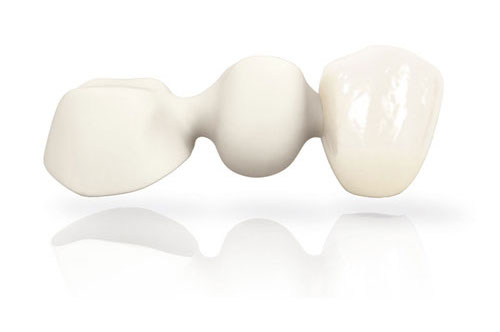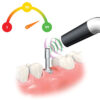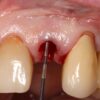- By - Malfaifi
- Posted on
- Posted in التركيبات, التركيبات الثابتة, مواد طب الأسنان
Zirconia frameworks for posterior fixed partial dentures
Five-year clinical results of zirconia frameworks for posterior fixed partial dentures
Sailer et al 2007

Studies using finite-element analysis demonstrated that during occlusal loading the highest stress within FPDs was located at the gingival side of the connector area.
- Zirconia exhibits the highest bending strength (900 MPa) .
- The preprosthetic and prosthetic treatments were toughness (9 MPa m1/2) of all presently available similar to the techniques normally applied for metal- ceramic material.
- The success rate for the zirconia frameworks in the 5-year follow-up was 97.8%; the remaining 11 failed FPDs were lost because of biologic or technical complications.
- Chipping of the veneering ceramic occurred after a mean service time of 35.1 (± 13.8) months.
- A statistically significant association between the occurrence of marginal gaps and secondary caries was found (P = .0046, Fisher exact test), but because of the small sample size no statistical correlation between any of the complications.
- Fourteen FPDs were luted with Variolink and 20 with Panavia TC. No differences were found in the overall survival or the occurrence of marginal discrepancies and caries when comparing the FPDs cemented with Variolink to those cemented with Panavia.
- The success rate of posterior FPDs with zirconia frame- works was 97.8% after 5 years.
- Only 2 ceramics were previously utilized for FPD frameworks: Empress 2 (Ivoclar Vivadent) and In-Ceram (VITA).
- Compared with Empress 2, In-Ceram FPDs showed better clinical results.
- As a result of various biologic and technical problems, the overall survival rate of zirconia FPDs in this study was 73.9%. Marginal gaps leading to secondary caries were found in more than 20% of the cases.
- The most frequent technical problem in all studies of zirconia reconstructions is chipping or fracture of the veneering ceramic.
- Conventional feldspathic veneering ceramics for metal-ceramic reconstructions exhibit lower fracture rates than zirconia all-ceramic FPDs.
- Thus, in a clini-cal study of metal-ceramic FPDs, fracture of the porcelain veneering was reported in only 2.5% of the reconstructions after 5 years of clinical observation.
- No chipping or fracture of the veneering was observed in In-Ceram FPDs after 5 years.


